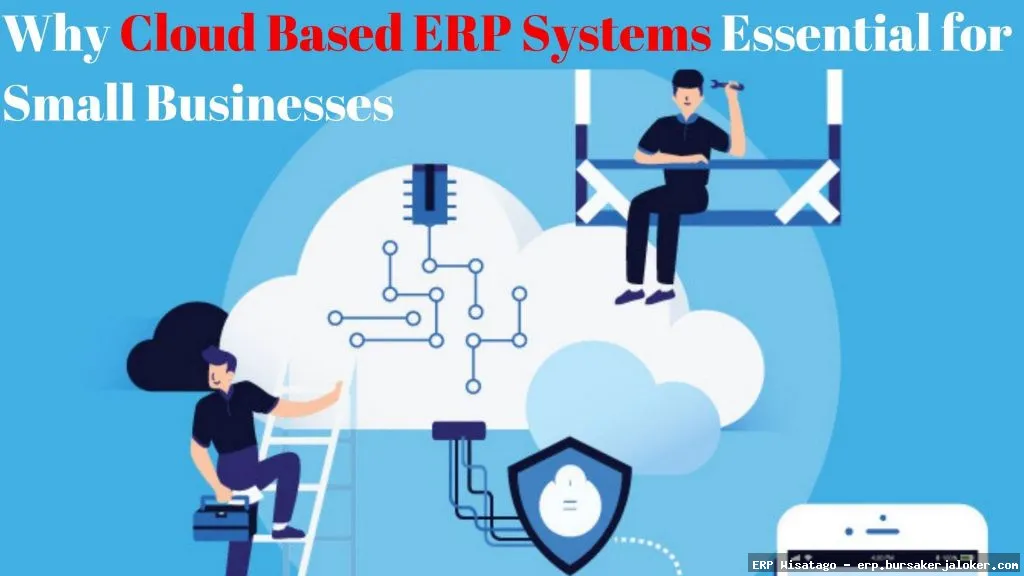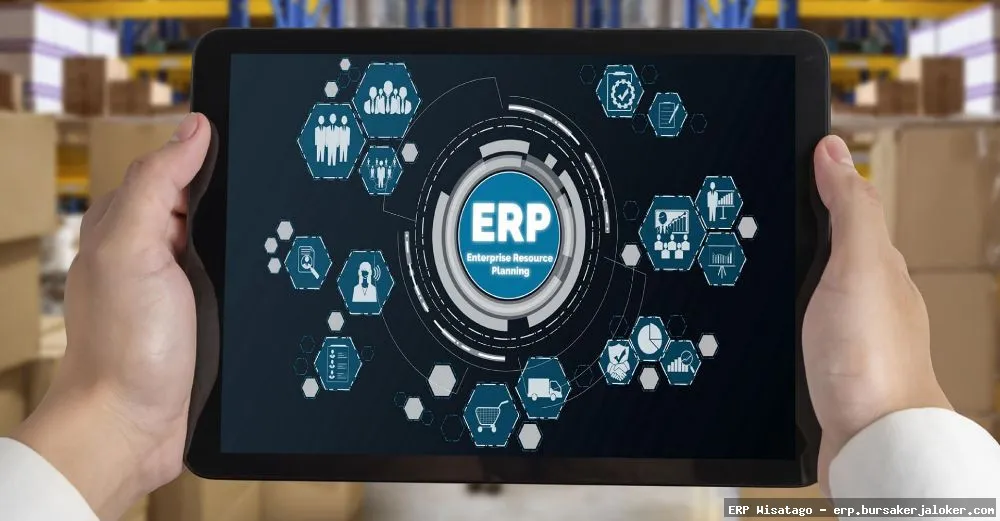In today’s fast-paced business environment, staying competitive requires more than just a great product or service. It demands efficient operations, streamlined processes, and real-time visibility across all departments. That’s where Enterprise Resource Planning (ERP) systems come in. Traditionally, ERP solutions were complex, on-premise installations that required significant upfront investment in hardware, software licenses, and IT infrastructure. But the rise of cloud computing has revolutionized the ERP landscape, offering a more accessible, scalable, and cost-effective alternative.
Cloud-based ERP systems have become increasingly popular, particularly among small and medium-sized businesses (SMBs) that may lack the resources to manage a traditional on-premise ERP. These systems offer a host of benefits, including lower upfront costs, faster implementation times, and improved accessibility. However, choosing the right cloud ERP solution can be a daunting task, as there are numerous vendors and options available. Understanding the features, benefits, and potential challenges of cloud ERP is crucial for making an informed decision.

This article aims to provide a comprehensive guide to cloud-based ERP systems, covering everything from the basics of ERP to the specific advantages and considerations of cloud deployment. We’ll explore the core features of ERP, delve into the benefits of cloud ERP, discuss common implementation challenges, and provide practical advice on how to choose the right solution for your organization. Whether you’re just starting to explore ERP or are looking to migrate from an existing system, this guide will equip you with the knowledge you need to make a successful transition.
What is Enterprise Resource Planning (ERP)?
Enterprise Resource Planning (ERP) is a type of software system that integrates and automates various business processes, allowing organizations to manage their resources more effectively. Think of it as the central nervous system of your business, connecting all your different departments and functions into a single, unified system. This integration provides real-time visibility into key business metrics, enabling better decision-making and improved overall performance.
Core Modules of an ERP System
An ERP system typically consists of several modules, each designed to manage a specific aspect of the business. Some of the most common modules include:
- Financial Management: Handles accounting, budgeting, financial reporting, and tax compliance.
- Supply Chain Management (SCM): Manages the flow of goods and services, from procurement to delivery. This includes inventory management, order management, and logistics.
- Manufacturing: Supports production planning, shop floor control, and quality management.
- Customer Relationship Management (CRM): Manages customer interactions, sales processes, and marketing campaigns.
- Human Resources (HR): Manages employee data, payroll, benefits, and recruitment.
- Project Management: Tracks project progress, manages resources, and controls costs.
Benefits of Implementing an ERP System
Implementing an ERP system can bring numerous benefits to an organization, including:
- Improved Efficiency: Automating tasks and streamlining processes reduces manual effort and errors.
- Enhanced Visibility: Real-time data provides a clear picture of business performance across all departments.
- Better Decision-Making: Accurate and timely information enables informed decisions.
- Reduced Costs: Streamlining operations and eliminating redundancies can lower operational costs.
- Improved Customer Service: Access to customer data and streamlined processes leads to better customer service.
- Increased Collaboration: A unified system facilitates collaboration between departments.
Cloud-Based ERP: A Modern Approach
Cloud-based ERP, also known as Software-as-a-Service (SaaS) ERP, is an ERP system hosted on the vendor’s servers and accessed via the internet. This eliminates the need for organizations to invest in and maintain their own hardware and software infrastructure. Instead, they pay a subscription fee to access the ERP system and its functionalities.
Key Features of Cloud-Based ERP
Cloud-based ERP systems typically offer the same core functionalities as traditional on-premise ERP systems, but with some key differences:
- Accessibility: Accessible from anywhere with an internet connection, allowing employees to work remotely.
- Scalability: Easily scale up or down based on changing business needs.
- Automatic Updates: Vendor handles software updates and maintenance, reducing the burden on IT staff.
- Security: Cloud providers invest heavily in security measures to protect data.
- Integration: Many cloud ERP systems offer integrations with other cloud-based applications.
Benefits of Cloud-Based ERP Over On-Premise ERP
Cloud-based ERP offers several advantages over traditional on-premise ERP systems:
- Lower Upfront Costs: Eliminates the need for expensive hardware and software licenses.
- Faster Implementation: Cloud ERP systems can be implemented much faster than on-premise systems.
- Reduced IT Burden: Vendor handles maintenance, updates, and security, freeing up IT staff to focus on other tasks.
- Improved Scalability: Easily scale up or down based on changing business needs.
- Enhanced Accessibility: Accessible from anywhere with an internet connection.
Common Challenges of Cloud ERP Implementation
While cloud ERP offers many benefits, it’s important to be aware of the potential challenges associated with its implementation. Having been through a few ERP implementations, I can tell you that proper planning is key.
Data Migration
Migrating data from legacy systems to the new cloud ERP system can be complex and time-consuming. Data needs to be cleaned, validated, and transformed to fit the new system’s format. This is often a bigger undertaking than initially anticipated.
Integration with Existing Systems
Integrating the cloud ERP system with other existing systems, such as CRM or e-commerce platforms, can be challenging. Ensure that the cloud ERP system offers the necessary APIs and integration capabilities.
Change Management
Implementing a new ERP system requires significant changes to business processes and workflows. Employees need to be trained on the new system and adapt to the new way of working. Resistance to change can be a major obstacle to successful implementation. Communication is key here.
Security Concerns
While cloud providers invest heavily in security, some organizations may have concerns about the security of their data in the cloud. It’s important to choose a reputable cloud provider with robust security measures and compliance certifications.
Customization Limitations
Cloud ERP systems typically offer less customization than on-premise systems. This can be a challenge for organizations with unique business requirements. While some level of configuration is usually possible, extensive customization may not be feasible.
Choosing the Right Cloud ERP Solution
Selecting the right cloud ERP solution is crucial for a successful implementation. Here are some key factors to consider:

Identify Your Business Needs
Start by clearly defining your business needs and requirements. What problems are you trying to solve with an ERP system? What functionalities are essential for your business? Create a detailed list of requirements and prioritize them.
Evaluate Different Vendors
Research and evaluate different cloud ERP vendors. Consider their experience, reputation, and customer reviews. Ask for demos and trial periods to test the system’s functionalities and usability.
Consider Industry-Specific Solutions
If you operate in a specific industry, consider choosing an ERP system that is tailored to your industry’s needs. These systems often include industry-specific functionalities and best practices.
Assess Scalability and Flexibility
Ensure that the cloud ERP system can scale to meet your future business needs. It should also be flexible enough to adapt to changing business requirements.
Check Integration Capabilities
Verify that the cloud ERP system can integrate with your existing systems. This is crucial for seamless data flow and process automation.
Evaluate Security Measures
Assess the cloud provider’s security measures and compliance certifications. Ensure that your data is protected and that the provider meets your security requirements.
Consider the Total Cost of Ownership (TCO)
Don’t just focus on the initial subscription fee. Consider the total cost of ownership, including implementation costs, training costs, and ongoing maintenance costs.
Best Practices for Cloud ERP Implementation
To ensure a successful cloud ERP implementation, follow these best practices:
Plan Thoroughly
Develop a detailed implementation plan that includes timelines, milestones, and responsibilities. Identify potential risks and develop mitigation strategies.
Involve Key Stakeholders
Involve key stakeholders from all departments in the implementation process. This will ensure that the system meets their needs and that they are committed to its success. For more information, you can refer to RMM as an additional resource.
Provide Adequate Training
Provide comprehensive training to all employees who will be using the system. This will help them understand the system’s functionalities and how to use it effectively.
Test Thoroughly
Test the system thoroughly before going live. This will help identify and resolve any issues before they impact your business operations.
Go Live in Phases
Consider going live in phases, starting with the most critical modules. This will allow you to gradually roll out the system and minimize disruption to your business.
Provide Ongoing Support
Provide ongoing support to employees after the implementation. This will help them address any issues they encounter and ensure that they continue to use the system effectively.

Conclusion
Cloud-based ERP systems offer a compelling solution for businesses looking to improve efficiency, enhance visibility, and reduce costs. By understanding the features, benefits, and potential challenges of cloud ERP, organizations can make informed decisions and implement a system that meets their specific needs. Careful planning, stakeholder involvement, and thorough training are crucial for a successful implementation. As the cloud continues to evolve, cloud-based ERP systems will play an increasingly important role in helping businesses thrive in the digital age.
The journey to a successful ERP implementation isn’t always easy, but the rewards – improved efficiency, better decision-making, and a stronger bottom line – are well worth the effort. Remember to focus on your business needs, choose the right vendor, and plan carefully. Good luck!
Frequently Asked Questions (FAQ) about cloud-based ERP systems
What are the key advantages of using a cloud-based ERP system compared to an on-premise ERP solution?
Cloud-based ERP systems offer several compelling advantages over traditional on-premise ERP solutions. Firstly, reduced upfront costs are a significant benefit, as businesses avoid the expense of purchasing and maintaining servers and infrastructure. Instead, they pay a subscription fee. Secondly, scalability and flexibility are greatly enhanced, allowing businesses to easily adjust resources as their needs evolve. This is particularly important for growing companies. Thirdly, accessibility from anywhere with an internet connection improves collaboration and productivity for remote teams. Fourthly, automatic updates and maintenance are handled by the provider, freeing up internal IT resources. Finally, cloud ERP systems often offer enhanced security features managed by specialized security teams, potentially exceeding the security capabilities of smaller on-premise setups.
How much does a cloud-based ERP system typically cost for a small to medium-sized business (SMB) and what are the common pricing models?
The cost of a cloud-based ERP system for an SMB varies significantly based on factors such as the number of users, the modules required, the level of customization, and the vendor chosen. Generally, you can expect to pay anywhere from a few hundred to several thousand dollars per month. The most common pricing models are: per-user per-month, where you pay a fixed fee for each user accessing the system; tiered pricing, where you select a package with a specific set of features and user limits; and usage-based pricing, where you pay based on the amount of resources consumed, such as data storage or transactions processed. It’s crucial to carefully evaluate your business needs and compare pricing models from different vendors to find the most cost-effective solution. Remember to factor in potential implementation costs and ongoing support fees.
What security measures should I look for when choosing a cloud-based ERP system provider to ensure my business data is protected?
Data security is paramount when selecting a cloud-based ERP system. Ensure the provider has robust security measures in place. Key aspects to consider include: Data encryption both in transit and at rest, protecting data from unauthorized access. Look for compliance certifications like SOC 2, ISO 27001, and GDPR, which demonstrate adherence to industry-standard security practices. Regular security audits and penetration testing should be conducted to identify and address vulnerabilities. Strong access controls and multi-factor authentication are essential to prevent unauthorized user access. The provider should also have a clear data backup and disaster recovery plan to ensure business continuity in case of an outage or data loss. Finally, inquire about their data privacy policies and how they handle data breaches to ensure compliance and transparency.
